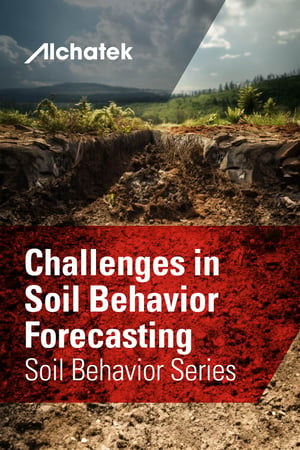
 Every structure, from the smallest building to the grandest bridge, rests upon a complex substrate known as soil. However, the interplay of factors affecting soil behavior has made it a tricky entity to predict. This unpredictability poses significant challenges to engineers, architects, and environmentalists. The current discourse seeks to uncover the intricacies behind the daunting task of soil behavior forecasting, shedding light on the myriad of influences and their profound implications.
Every structure, from the smallest building to the grandest bridge, rests upon a complex substrate known as soil. However, the interplay of factors affecting soil behavior has made it a tricky entity to predict. This unpredictability poses significant challenges to engineers, architects, and environmentalists. The current discourse seeks to uncover the intricacies behind the daunting task of soil behavior forecasting, shedding light on the myriad of influences and their profound implications.
Complex Nature of Soil Composition
At the outset, the heterogeneous nature of soil presents the first forecasting challenge:
- Variability: Even within a small plot of land, the soil's composition can vary dramatically. This spatial variability, from one location to another, means that predicting soil behavior isn't a one-size-fits-all process.
- Temporal Changes: Soil isn't static. Over time, its properties can change due to biological activity, seasonal effects, or human interventions. Such dynamic alterations further complicate prediction efforts.
Moisture Content Variations
Water, as an integral component of soil, wields significant influence:
- Influence on Soil Strength: Moisture content directly impacts soil's shear strength. For instance, some soils may lose strength with increased moisture, posing risks to structures.
- Fluctuations Due to Climate: Seasonal variations, rainfall events, and droughts can dramatically alter soil's moisture content. In areas prone to heavy rains or flooding, soil liquefaction becomes a critical concern.
- Human Activities: Agricultural practices, drainage systems, and construction can either deprive or inundate soils with water, affecting their mechanical properties.
External Pressures and Loads
The forces exerted on the soil play a pivotal role:
- Static Loads: Structures exert constant pressures on the soil. Predicting how soil will behave under these continuous loads, especially in the long term, is essential for structural safety.
- Dynamic Loads: These are non-constant, changing forces such as vehicular traffic, machinery vibrations, or even seismic activities. Soils' response to dynamic loads, particularly in terms of resilience and damping, poses a forecasting challenge.
- Ground Movement: Geological activities, such as tectonic plate movements, can result in ground displacement, impacting the soil's structure and behavior.
Chemical Interactions
Beyond the physical, the chemical realm of soil is rife with complexities:
- Soil Contamination: Industrial activities, waste disposal, and chemical spills can introduce contaminants. These chemicals may alter the soil's physical properties, making prediction efforts more complex.
- Salinity and Alkalinity: In areas with high salinity or alkalinity, soil behavior becomes erratic due to chemical interactions between salts, minerals, and organic matter.
- Biochemical Processes: The decomposition of organic matter, microbial activities, and root penetration can change the soil's chemical makeup, influencing its overall behavior.
Impact of Vegetation and Root Systems
Plants and their root systems offer both stabilization and complications:
- Root-Soil Interactions: While roots can bind soil particles, offering stability against erosion, their growth can also create voids and channels, affecting soil density and compaction.
- Uptake of Water: Plants continuously draw water from the soil, altering its moisture content. In large, vegetated areas, this can significantly influence soil behavior.
- Decomposition: As plants die and decompose, they alter the soil's organic content, impacting its physical and chemical properties.
Temporal and Historical Factors
The history of the soil plays a silent, yet crucial role:
- Previous Stress and Strain History: Soils "remember" the loads they've experienced. This memory can affect their future behavior, especially when subjected to similar stresses.
- Aging: Over time, soil particles undergo changes due to continuous environmental interactions, impacting their strength and behavior.
- Previous Human Interventions: Activities like excavation, filling, compaction, or tunneling can leave lasting impacts on soil behavior.
The unpredictable nature of the soil, stemming from its multifaceted influences, makes forecasting its behavior a monumental task. However, recognizing and understanding these challenges is the first step toward effective prediction.


